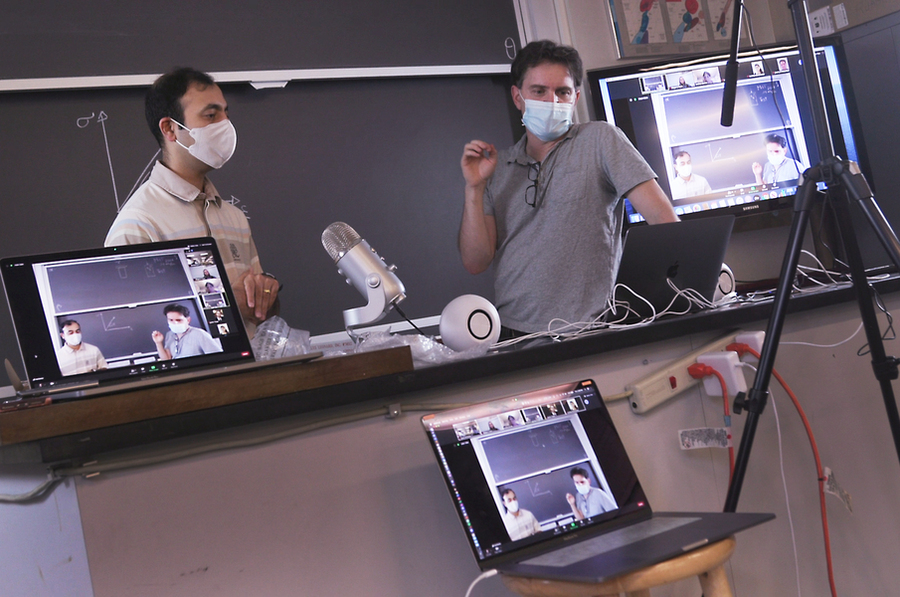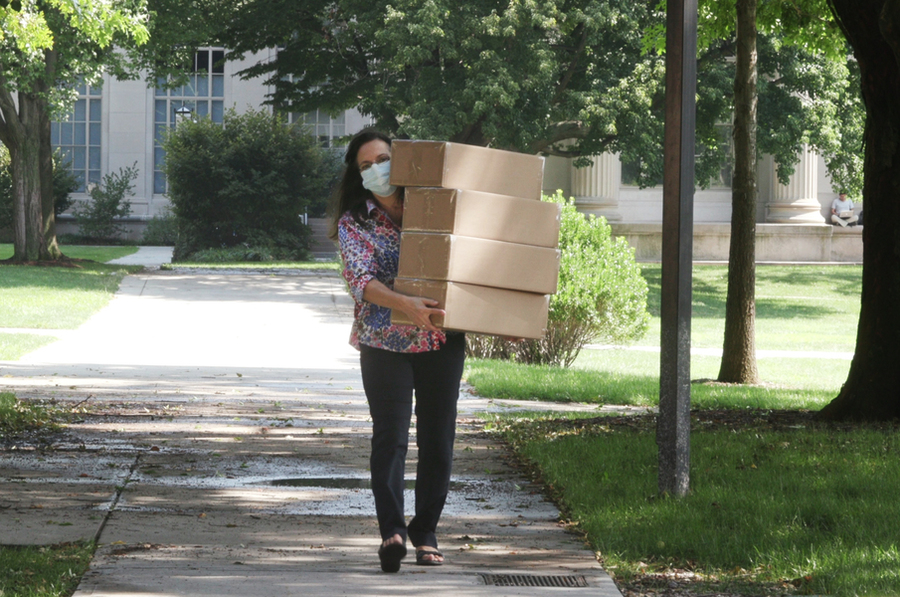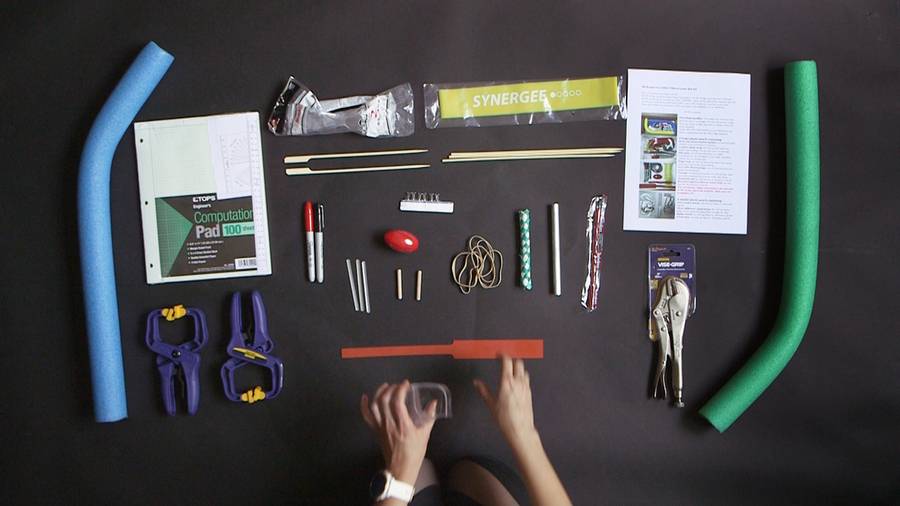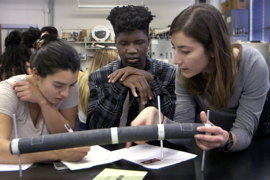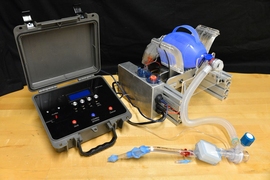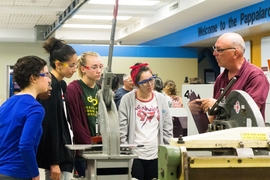Educators across the globe spent much of the summer preparing for an academic year unlike any in history. Well before MIT announced its plans for fall semester in early July, faculty and teaching staff across the Institute had spent weeks revamping their fall classes for a number of scenarios. With the majority of classes being taught remotely and extensive safety protocols in place for classes with in-person components, teaching staff had to get creative.
“Our teaching team is stubborn and we were not going to give up,” says Nevan Hanumara SM ’06, PhD ’12, research scientist and instructor in class 2.75 (Medical Device Design). “We decided that we had to find a way to deliver a good educational experience no matter where the students are — they could be at home with their families, sharing a dining table with housemates, or in the dorms.”
Like Hanumara and the 2.75 teaching team, faculty and staff across MIT have had to completely revise their classes to either be fully remote or ensure that any in-person component is done in a way that keeps students and the wider community safe. The hands-on and project-based nature of many mechanical engineering classes posed a unique challenge for faculty and staff in MIT’s Department of Mechanical Engineering (MechE).
Maximizing lab time
Students in class 2.008 (Design and Manufacturing II), have the option of attending some in-person components of the course or taking it fully remote. To keep everyone safe, the 2.008 teaching team plans to maximize lab time.
All class-based portions of the course, including lectures, will be remote, as has been the case for the past several years in 2.008. During the lab-based portions, teams of roughly five students will be tasked with designing and building 50 yo-yos using injection molding with the assistance of staff in MIT’s Laboratory for Manufacturing and Productivity (LMP).
Joseph Wight, manufacturing lab manager, in collaboration with the 2.008 staff and other instructors in MechE, has developed a system to ensure students are fully familiar with lab equipment before they step into LMP by broadcasting instructions remotely before in-person lab time.
“I have cameras pointing at the spindles, the machines, and the screens that control the machines we use in the course,” says Wight. “The objective is to get students as comfortable as possible before they enter into the shop so that when they show up, they know what machine they're going to use and how to use it.”
Students who are on campus and participating in the in-person components are asked to relay details of their lab experiences with their remote team members.
Outside the lab, Wight and the rest of the teaching team are having the students utilize more computer aided design and simulation software to engage the remote students and add more engagement to the entire design and manufacturing process.
“We’re going to do our best to give students what they need to finish this course and have a great experience, but the caveat is that it’s going to be different,” adds Wight. “In a way, we are preparing students for how to work remotely, which is going to be a part of whatever career they choose moving forward.”
Mimicking the hybrid model of some remote and in-person employees in industry is something the teaching team of 2.75 (Medical Device Design) is also exploring this semester.
Sending “mechanical gizmo” kits
Like Wight and the 2.008 staff, the teaching team of 2.75 designed a course that could either be taken fully remotely or with some in-person components.
“We realized we have an opportunity for a unique blended learning experience with some team members remote and some in-person, just as it would be in industry nowadays,” says Hanumara.
Wherever students are this semester, they were sent a kit of materials — or “mechanical gizmos” — assembled by Alexander Slocum '82 SM '83 PhD '85, the Walter M. May and A. Hazel May Professor, and his wife Debra Slocum SM '89, as well as a kit of basic electronics, designed by veteran instructor Gim Hom '71 SM '72 EE '73 SM '73. Using materials from the kits, students will assemble small wooden precision fixtures and their own heart rate monitors. In most instances, students won’t know what they can use the kit of materials to build until lecture has started, live streaming from Slocum’s home workshop.
As in a typical semester, students in 2.75 will also pick from a list of projects to design and build a medical device prototype. This year, students can choose from projects led by Giovanni Traverso, the Karl Van Tassel (1925) Career Development Professor; Ellen Roche, the W.M. Keck Foundation Career Development Professor; and others proposed by clinician-collaborators that the team has assembled.
For Hanumara, this semester offers an opportunity to garner insights into how to make education more accessible for communities that are geographically isolated or for individuals with inflexible schedules.
“Fall 2020 is going to be different, but it is an incredible experiment in new modalities of teaching,” he adds. “What we learn from this semester at MIT will carry forward.”
Prioritizing self-directed projects
Technical instructor Steve Banzaert and the team of faculty and instructors in class 2.678 (Electronics for Mechanical Systems), took lessons from the course’s spring 2020 unit to shape plans for fall semester. The class is being taught fully remote.
“Our big takeaway from the spring was that in order for students to get as much out of the subject as we wanted, we had to transform the class to focus on more self-directed project work,” says Banzaert.
As a result, students will be asked to complete open-ended projects on longer time frames than usual. Using a kit of materials sent to them over the summer, students will build devices and circuit boards that help them learn about physical phenomena associated with electronics.
To support students as they embark on their self-directed projects, the teaching staff has set up a “call center” to answer students’ questions at any time of the day throughout the week.
“Over the years, we have tried to build a welcoming and friendly community in this class. That’s the thing I’m hoping to translate the most into this online space,” adds Banzaert.
Building community in synchronous small group meetings
Community is at the center of another mechanical engineering class this semester — 2.001 (Mechanics and Materials I).
For many sophomores, 2.001 serves as their introduction to mechanical engineering at MIT. New bonds and friendships form during lectures, labs, and recitations.
“This class is where the MechE community forms. Students start getting to know each other and working together,” explains Simona Socrate, senior lecturer. “With students isolated in their own homes, bringing this sense of community is one of our biggest challenges.”
To help foster this community while the course is being taught fully remotely, Socrate and her fellow instructors are offering a number of synchronous small group meetings. Using whiteboard applications, teaching staff will interact with small groups of students to teach them core concepts.
These synchronous meetings are supported by a kit of fun, everyday materials and engineering components that were selected to illustrate key course concepts and shipped to students this summer. The kit also includes custom parts, manufactured by Professor Ely Sachs, to allow the students to conduct the course’s hands-on “Discovery Labs” in their own homes. While the instructor teaches a structural mechanics concept on Zoom, students can open their kit and refer to the object in question. Materials include small pool noodles, exercise bands, Twizzlers, locking pliers, finger traps, and Silly Putty.
“We try to make the synchronous time a combination of learning and personal interactions. The kits of materials help us all interact together online and make class time more engaging,” says Socrate.
Instructors like Socrate may not be able to predict how the Covid-19 pandemic will alter the rest of the academic year, but they will continue to innovate and develop new methods of teaching to provide students with the best possible educational experience in any circumstance.
